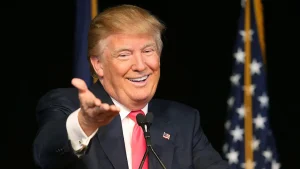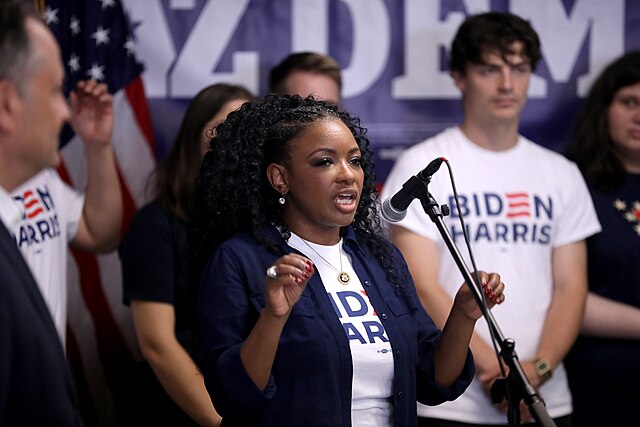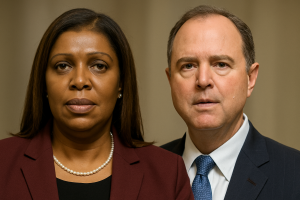What the Latest D.C. Crime Data Means for Trump’s Federal Plan
The debate over federal intervention in local law enforcement has reignited after a major U.S. city recorded results that have everyone talking. Washington, D.C., long plagued by rising crime rates, has become the center of a national discussion following an unprecedented move by President Donald Trump.
What happened—and what the numbers now reveal—has both critics and supporters doubling down.
Crockett Slams Trump Over D.C. Policing Strategy
The latest round of controversy began when Rep. Jasmine Crockett (D-TX) publicly criticized Trump’s decision to federalize law enforcement efforts in the nation’s capital. Speaking on California Governor Gavin Newsom’s podcast, Crockett compared the increased police and National Guard presence in D.C. to dystopian fiction.
“I never finished [The Handmaid’s Tale]. I can’t watch it because it is too close to reality,” Crockett said, drawing parallels between the popular show and what she described as an oppressive security state.
She didn’t stop there. Crockett accused the administration of targeting minority-led cities, specifically pointing out that both Washington, D.C., and other cities previously subject to federal crackdowns are led by Black women.
“And so what we are seeing is this militarization,” she continued, “and obviously it started in your state [California]… of going to a black woman mayor’s city first. And now we are in yet another black woman-led city and taking over.”
For Crockett, this wasn’t just a policing strategy—it was a political and racial statement.
The Politics of Crime Control
The remarks instantly polarized commentators. Supporters of Crockett’s view argued that the show of force represented government overreach and echoed the kind of measures reserved for extreme emergencies, not routine crime spikes.
Meanwhile, defenders of Trump’s approach insisted that dramatic action was necessary after violent crime in D.C. reached alarming levels earlier this summer.
The president announced a 30-day federalization of law enforcement on August 11, citing a surge in carjackings, assaults, and homicides. His administration argued that the city’s leadership had failed to control spiraling crime, leaving federal intervention as the only viable solution.
But amid the political noise, few were paying attention to what the raw data was about to reveal.
Then the Numbers Came In
One week after the surge began, a stunning report emerged from the Metropolitan Police Department: Washington, D.C., had recorded zero homicides during that period.
Chuck Thies, a prominent political commentator, posted a screenshot of the official report on X, writing: “There have been ZERO MURDERS in DC during the past week.”
A heat map included in the report confirmed the claim: no homicides citywide.
And it wasn’t just homicides that saw a change. Data from the D.C. Police Union shows a dramatic decline in multiple crime categories since the crackdown began:
-
Carjackings: Down 83%
-
Robberies: Down 46%
-
Violent crime overall: Down 22%
-
Car theft: Down 21%
-
Assault with a deadly weapon: Down 6%
-
Property crime: Down 6%
-
Overall crime: Down 8%
Townhall’s Katie Pavlich summed up the shock many felt: “No murders for a week in D.C. and this is the response from the ‘leaders’ of the Democrat Party.”
Trump Responds
President Trump wasted no time highlighting the results during an interview with conservative radio host Todd Starnes.
“I’m going to be going out tonight, I think, with the police and with the military, of course. So we’re going to do a job,” Trump said.
“The National Guard is great. They’ve done a fantastic job.”
The president framed the outcome as a validation of his hardline approach to crime, even as opponents insisted the numbers reflect short-term anomalies rather than sustainable progress.
What Comes Next?
While crime stats can fluctuate, these results have put Trump’s critics on the defensive. If violent crime remains low for the remainder of the 30-day federalization, it could bolster arguments for more aggressive intervention in other cities struggling with lawlessness.
Crockett, however, remains firm in her view that the move sets a dangerous precedent. The debate over where to draw the line between federal authority and local governance is far from over.
For now, though, one fact is hard to ignore: for at least one week, Washington, D.C., achieved something it hasn’t seen in years—zero homicides. And that single statistic is fueling a national conversation about crime, politics, and the balance of power.

James Jenkins is a celebrated Pulitzer Prize-winning author whose work has reshaped the way readers think about social justice and human rights in America. Raised in Atlanta, Georgia, James grew up in a community that instilled in him both resilience and a strong sense of responsibility toward others. After studying political science and creative writing at Howard University, he worked as a journalist covering civil rights issues before dedicating himself fully to fiction. His novels are known for their sharp, empathetic portraits of marginalized communities and for weaving personal stories with broader political realities. Jenkins’s breakout novel, Shadows of Freedom, won national acclaim for its unflinching look at systemic inequality, while his more recent works explore themes of identity, resilience, and the fight for dignity in the face of oppression. Beyond his novels, James is an active public speaker, lecturing at universities and participating in nonprofit initiatives that support literacy and community empowerment. He believes that storytelling is a way to preserve history and inspire change. When not writing, James enjoys jazz music, mentoring young writers, and traveling with his family to explore cultures and stories around the world.








